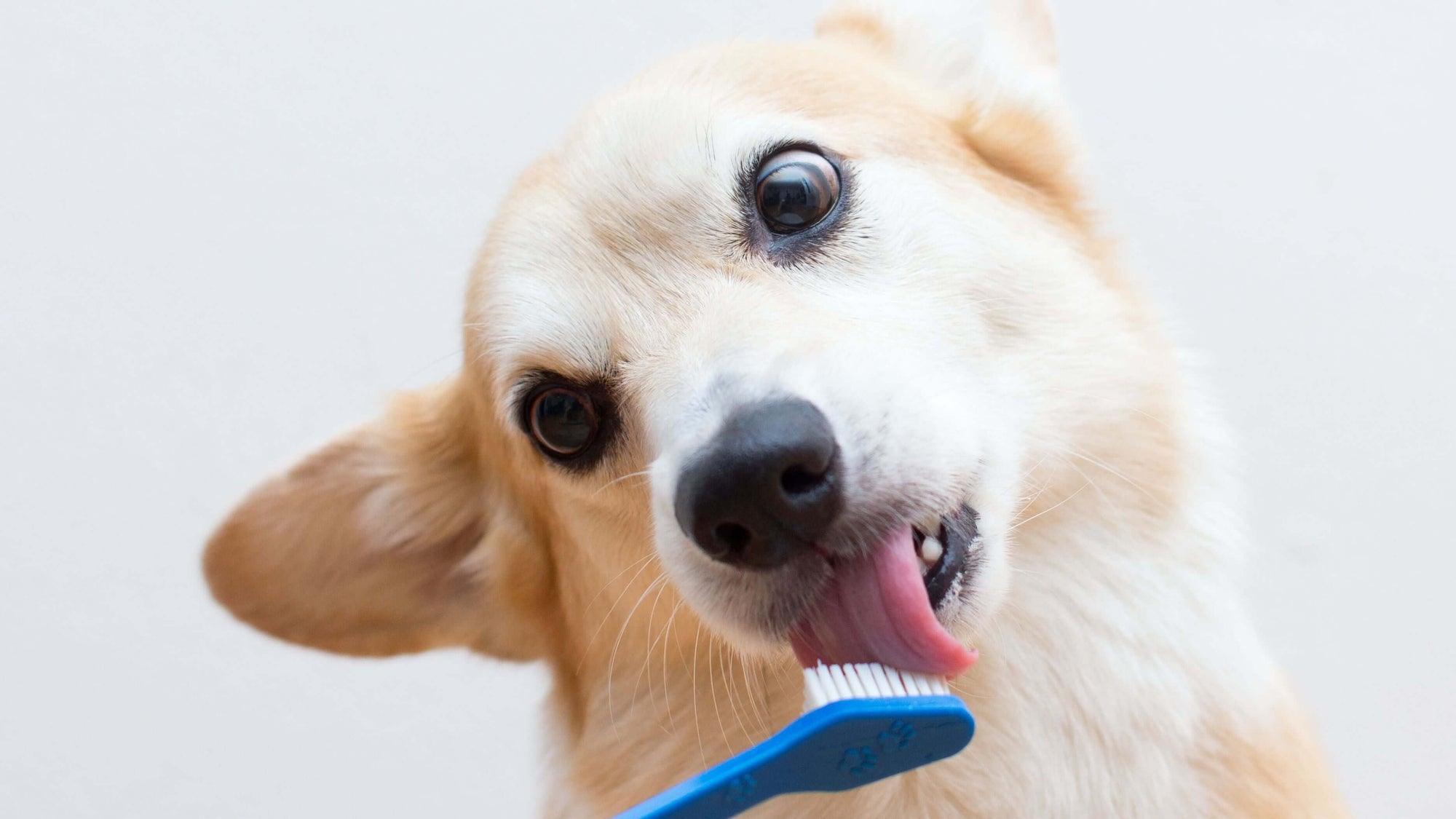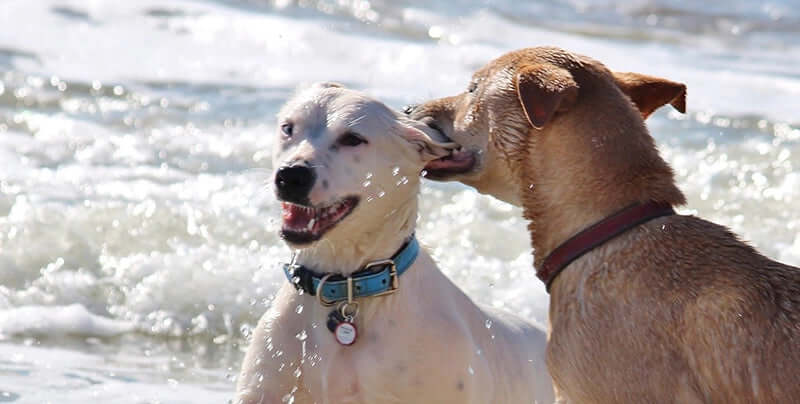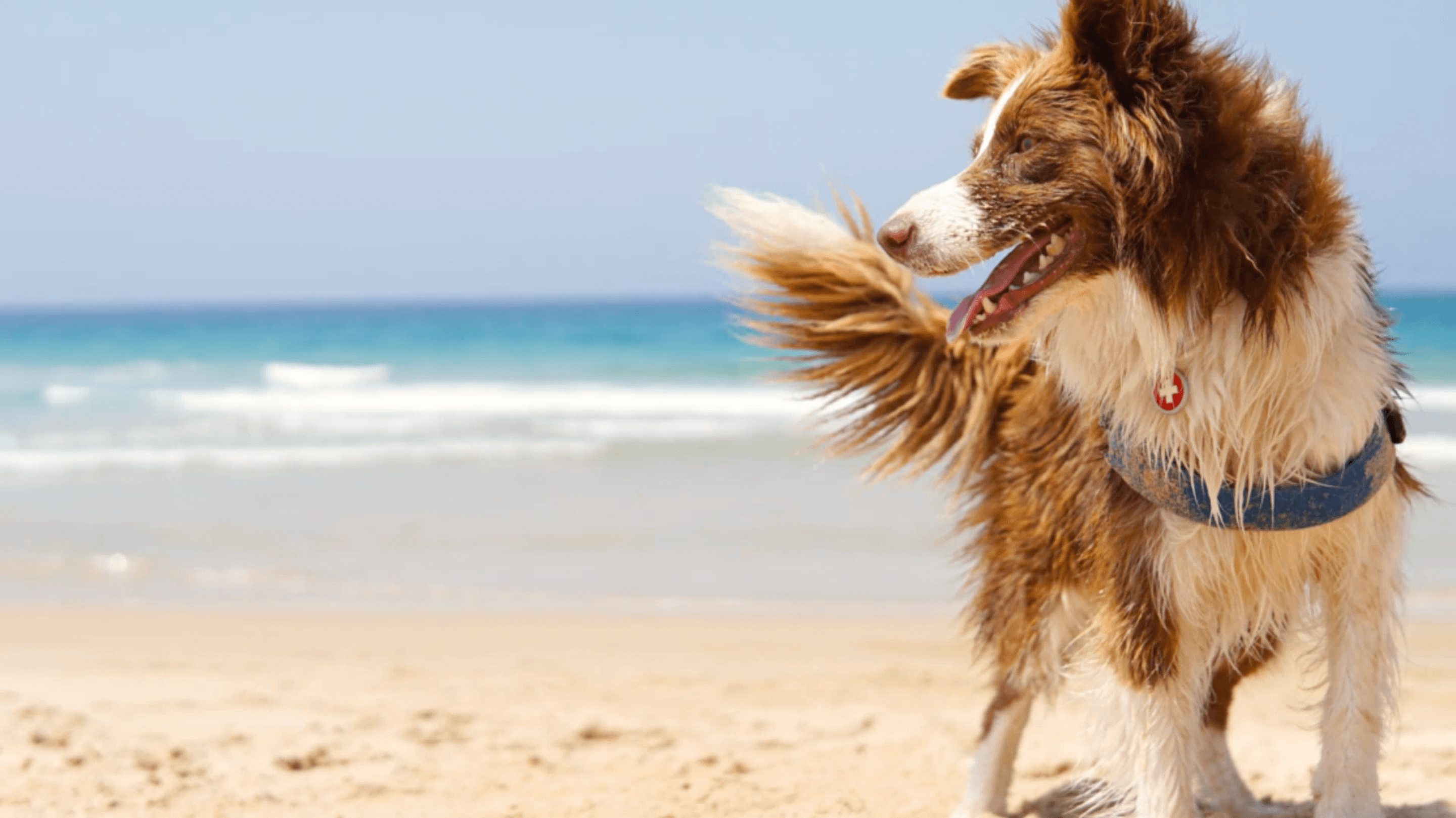Many pet parents notice that their dog’s hair stands up on their back when they are in the dog park, and are pretty confused by this behavior. What does this mean? Why does my dog’s hair stand up on their back? Is it a sign of aggression? Well, this is a phenomenon called piloerection and has a perfectly reasonable explanation. And no, it’s not always a sign of aggression.
What is piloerection?
First things first, we have to understand the true meaning of this behavior in order to comprehend its motives.
Dogs’ hackles are the hairs that cover their whole back and go all the way from the neck to the beginning of their tail. When you see that your dog’s hair stands up on their back, what's actually happening is that their hackle is being raised.
This behavior, also known as piloerection, and it’s actually not a behavior at all. It is, instead, an involuntary response. Dogs cannot control when to raise or lower their hackles. It is an automatic reaction to a certain stimulus.
The best way to understand it is to compare it to human goosebumps. We can’t control when we get goosebumps, it just happens when we are excited or scared, therefore, it is an involuntary reaction to a certain stimulus, such as a good song or a horror movie.
Why does dog’s hair stand up on their back? What causes raised hackles?
Now that we have set that straight, we can dive into the possible reasons why it might happen.
Although there is no research on this topic, many professionals and animal behaviorists agree on the fact that contrary to popular belief, aggression is not the only reason why a dog’s hackle may be raised.
So if you see that your dog raises their hackel at the park, you don’t have to assume that you have an aggressive pup right away. There are other possible reasons why your dog's hair might be up on their back.
The best way to identify which of the many reasons is behind your dog’s raised hackles, is to look for other body language signs that can confirm it.
Let's jump right into it.
1. Fear and anxiety
That’s right, a raised hackle could be a sign of fear and anxiety. Dogs can feel scared of multiple things in the dog park, the list is quite endless, because it truly depends on each dog. A dog can be scared of the train that passes by, while another one can fear bigger dogs or birds.
Regardless of the fear, dogs might raise their hackles as an involuntary response to the thing that triggers them.
In order to determine if your dog is raising their hackle because they are scared, you have to look for other body language signs that confirm it, such as having the tail tucked between the legs and hiding behind you.
Another way of confirming if your dog has a piloerection because they are scared is to look for something that scares your dog in the environment that surrounds you. At the end of the day, no one knows your dog like you do. And after having them in the family for some time, you start to learn the things that frighten them.
If this is the case of your dog, it’s extremely important to not try to correct it, because you might cause a problem where there isn’t one. For example, if your dog has a piloerection because they are scared and you instantly think it is because they are aggressive and you don’t let them get near other dogs, they might develop aggressive behavior.

2. Aggression
Although we have established that aggression is not the one and only reason why dog’s hackles are raised, it definitely is one of them.
Aggressive and reactive dogs exist. They are characterized for having extreme and sometimes violent reactions when meeting other dogs or even people. Luckily, in most cases, that behavior can be corrected with a proper treatment that includes techniques such as positive reinforcement.
Aggressive dogs tend to have raised hackles as a warning to others that they don’t feel comfortable in the situation they are in, and they might react violently. The raised hackle is often accompanied by other signs such as growling, teeth showing and stiff body movements.
When your dog is displaying these signs, the best thing you can do is try to distract them from their focus. You can do so by carrying their favorite healthy treats with you when you go to the park. When they adopt the body posture and display the signs mentioned before, it’s time to take out the treat and divert their attention to it.
3. Dominance
There are some dogs that are more dominant and some that are more submissive. What is more, although dogs tend to maintain their position in the dominance scale, they can show a more submissive behavior in certain situations. Either way, this doesn’t represent a problem.
Dogs can raise their hackles involuntarily when they want to assert their dominance over others during a certain situation. For example, a mother can do so when someone tries to approach her puppies or a doggo can do it when other dogs try to approach their human in the park.
If a dog raises their hackle to assert dominance, you’ll probably notice it because they will only do it for a few seconds and don’t show any other signs of aggression.
4. Excitement
As confusing as it might sound, dogs can also have raised hackles just because they are excited. When they meet another dog or see their favorite person, they might have their hackle raised as a sign of pure joy and excitement.
You’ll notice this because they will show other body language signs of excitement such as tail wagging and jumping.
















